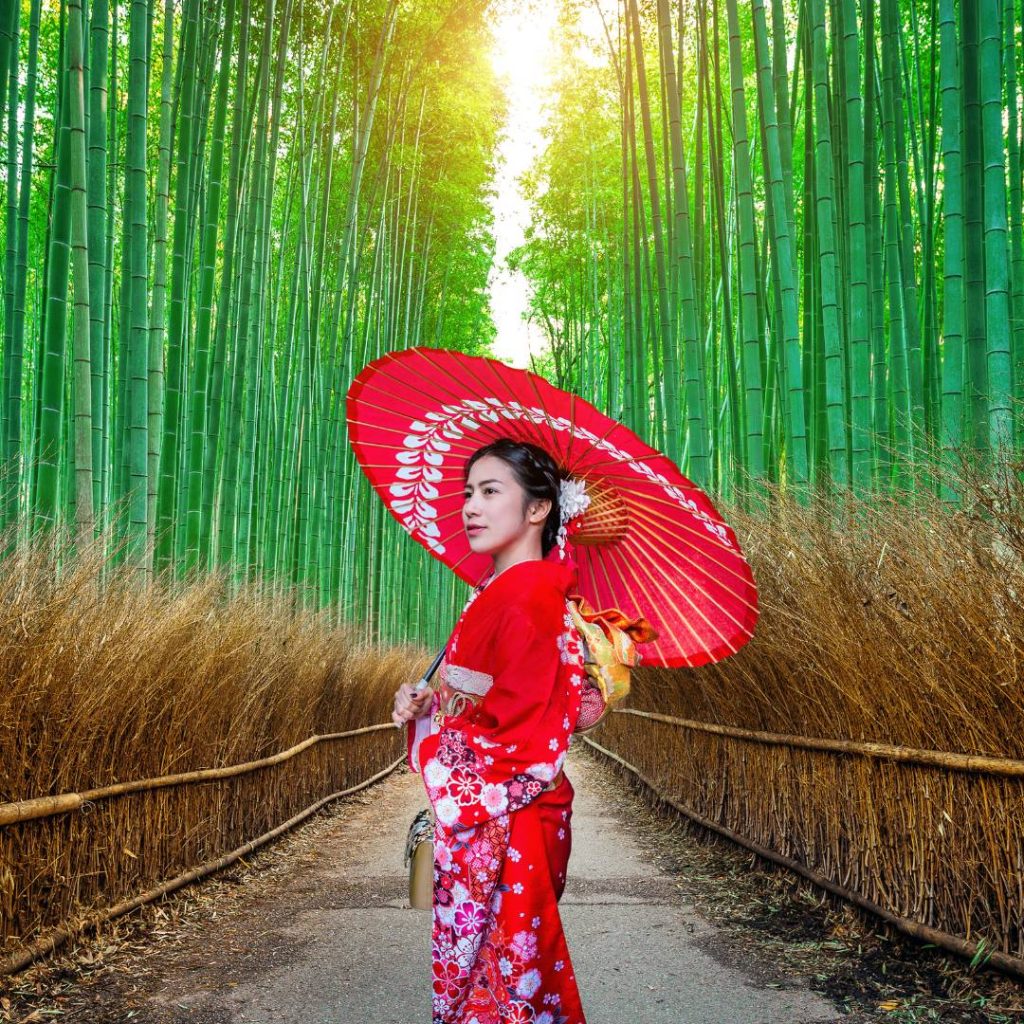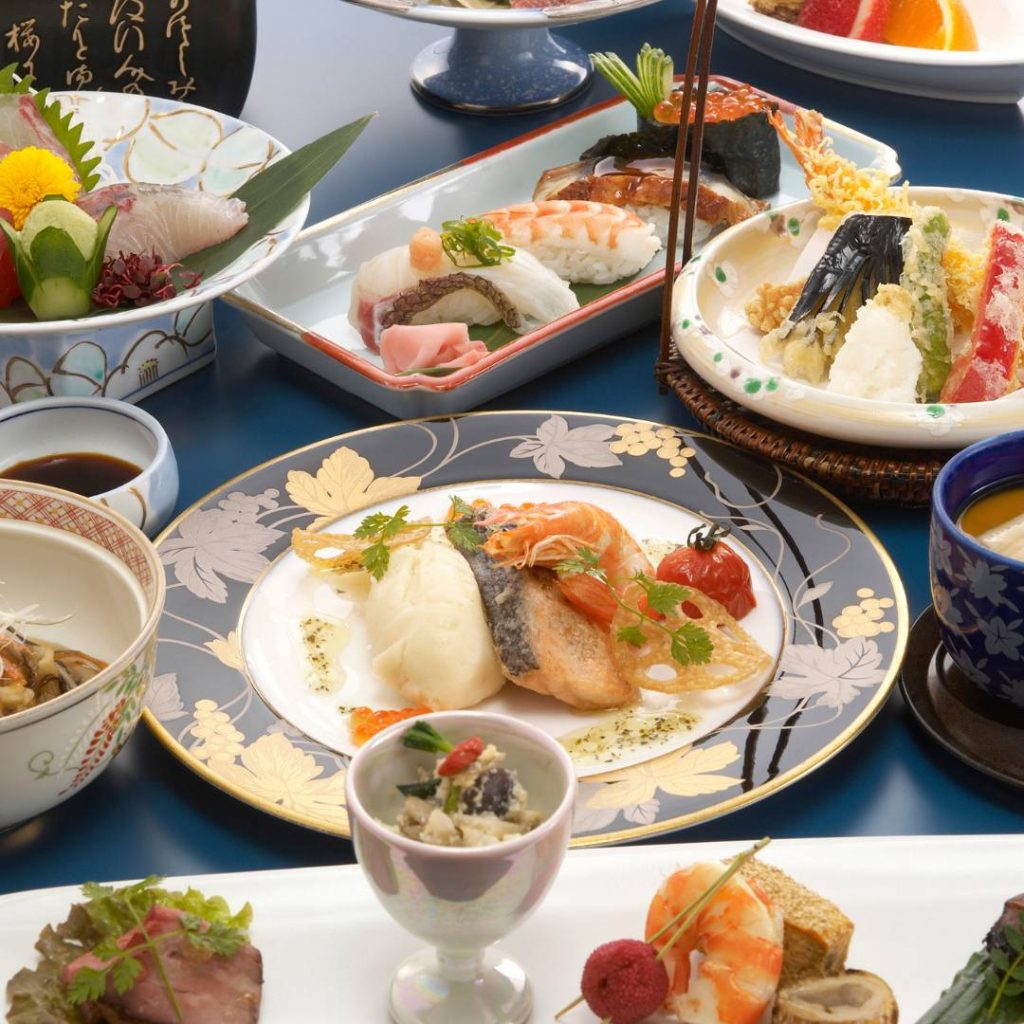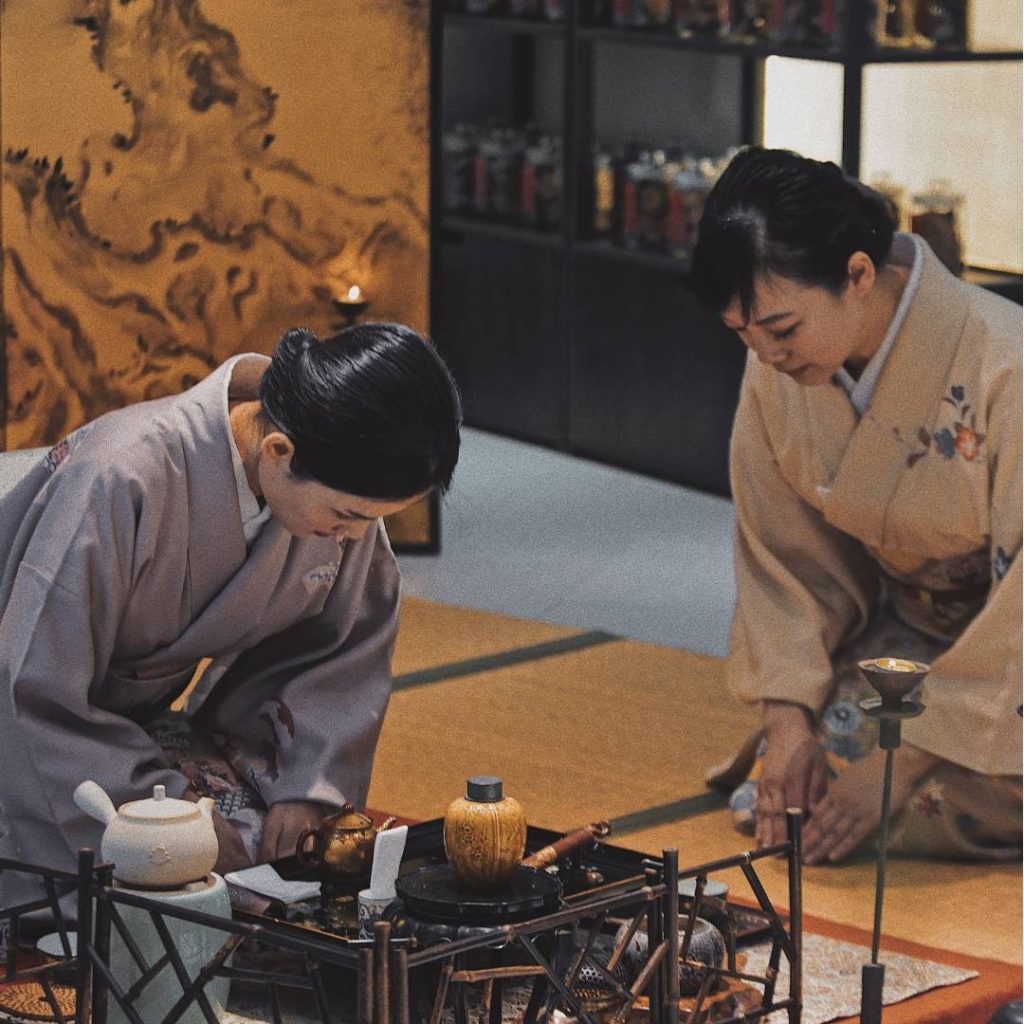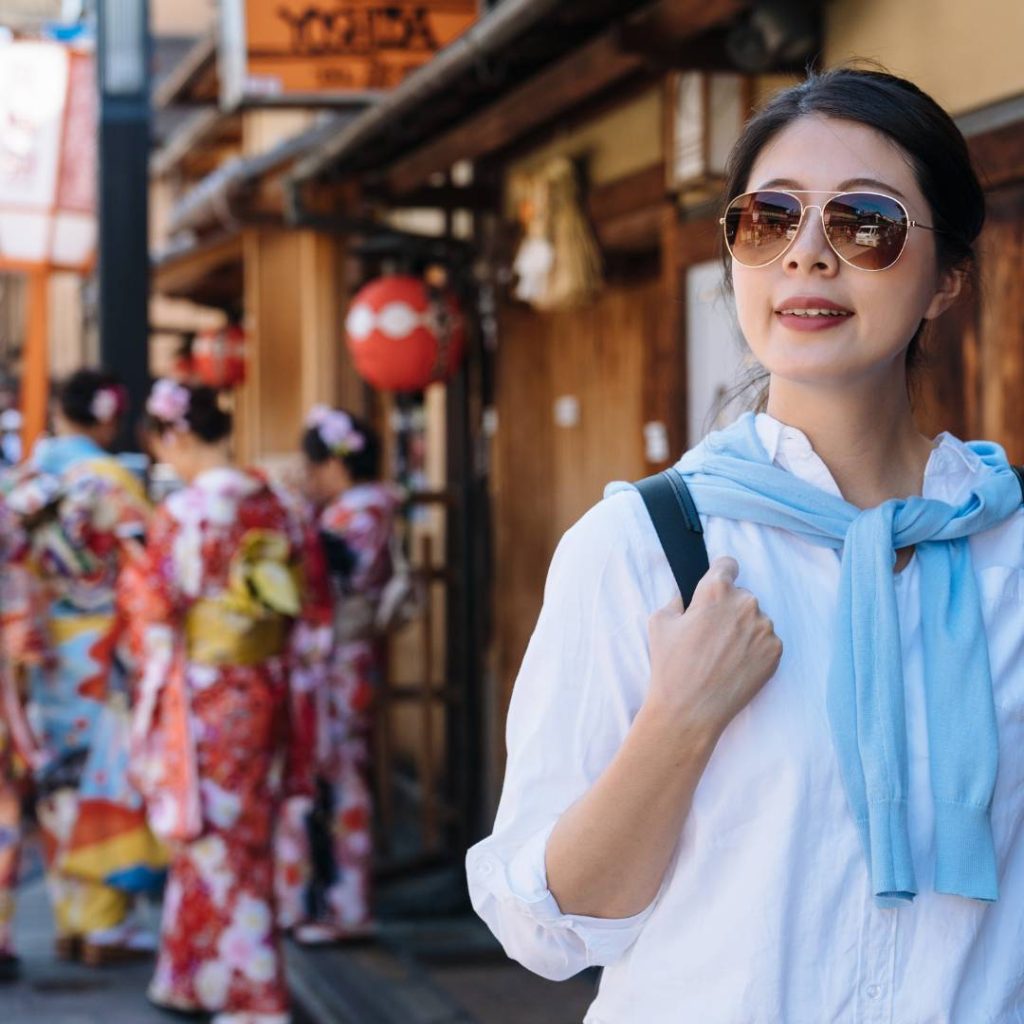Looking to relax? Kyoto is the perfect place for you.
Kyoto is at the top of most Japanese travel itineraries, and it’s easy to understand why.
It has everything, from the kaiseki dining spots and bamboo groves to geisha performances and green tea.
Below, I’m sharing a couple of relaxing but rewarding activities in Kyoto to inspire your trip!

Go sightseeing around Arashiyama
If you’ve ever watched the Academy Awards-winner Memories Of A Geisha (2005), you’ve probably put Arashiyama Bamboo Grove on your must-sees in this lifetime.
The idea of strolling through towering stalks of bamboo is calming and almost otherworldly, but there is so much more to see in this sprawling, scenic town.
You can take a guided rickshaw tour, rent a bike, or hop on a boat at the Hozu-gawa area.
Pass by the Tenryu-ji Temple with wonderful mountain views above and fine gardens below.
Mingle with the monkeys at the Kameyama-koen Park. Or, relax at the Tenzan-no-yu Onsen, a huge bath and spa complex.
Visiting in December? Perfect! Catch the Hanatoro festival, wherein temples, shrines, and the bamboo grove get lit up by thousands of lanterns creating a truly magical experience.

Savor Kaiseki cuisine
I could name the hottest dishes you should try, but why don’t you go all out with a multi-course haute cuisine?
My friends, meet the feasts to end all feasts: kaiseki ryori (会席料理).
Its origins stem from the
Today, you can order it for yourself in specialized restaurants or while staying at a ryokan (Japanese-style inn).
A kaiseki dinner consists of anywhere from 7 to 14 courses, prepared using advanced Japanese cooking techniques, presentation methods, and ingredients; and served in a strictly prescribed order that honors the seasons.
You’ll find lots of seafood, shellfish, and vegetables, with rice offered at the end along with miso soup, tukemono (Japanese pickles), and your choice of drink. You can’t go wrong with sake!
Food and their Seasons
Japanese love their seasons, and you’ll see it in the way they garnish and plate the dishes, as well as in the crockery and ambiance they set.
For example, in autumn, you might be offered a Hojicha tea, pumpkin or kabocha-flavored treats, or utensils that incorporate warm colors of the season.
Like the
lavish meal like this comes with a price, but with the number of dishes you’ll get to try, it’s totally worth it.

Experience a tea ceremony
The
Everything—from the surroundings of the ceremony and intricacies of the dishware, to the graceful hand movements and the correct manner of drinking the
Although different schools of
Each session is a “unique meeting of souls” that must be treasured.
Locals have been drinking tea for over a thousand years, with the most lavish
For mortals like us,
Look for a tatami room or
As an aside, I can’t imagine a more zen moment than a bowl of hot tea in hand after a busy morning of touring. Tell me I’m not the only one!

Enjoy a contemplative walk on the philosopher’s path
Tetsugaku no Michi, also called The Philosopher’s Path, is a stunning stone walkway through the northern part of Kyoto’s Higashiyama district.
Its name is a nod to Nishida Kitaro, one of Japan‘s most famous philosophers, who believed to practice meditation while walking this route to Kyoto University.
Though it’s most famous for its hanami (cherry blossom viewing) spots in spring and strikingly colorful foliage in autumn, it is the ultimate attraction for any relaxation seeker and those who need some active downtime during a jam-packed vacation.
Stretching over two kilometers long, it runs between Ginkakuji (Silver Pavilion) and Nanzenji.
Traversing the path should take you no longer than an hour, but there’s no need to rush, especially with the beautiful distractions along the way.
Explore the temples, shrines, cafes, galleries, and rows of shops selling crafts, antiques, and kimonos.
About halfway up the path lies a memorial stone, carved with a short poem by the eponymous philosopher. Opposite that is Pomme Café, where you can enjoy some cake, cookies, or coffee while reflecting a little bit more on his message.

Immerse yourself in Kyoto culture at Gion district
To get a glimpse of old Japan, look for Gion on your map.
Located on the eastern bank of Kamagowa River, this famous entertainment district still celebrates numerous Japanese traditions, from the elaborately-dressed geishas to the well-preserved 17th-century teahouses.
Let me warn you: time flies here.
You can take a leisurely stroll along the cherry tree-lined Hanami-koji street, or write down your heart’s deepest desires on a paper katashiro charm and hang it up at the Yasui Kompira-gu Shrine’s magical stone.
Watch a kabuki show at the Minamiza Theater, or squeeze yourself inside Kimono
Of course, don’t leave without checking the temples of Ginkakuji and Chion-in.
If the cultural attractions start to tire you, take a break inside a cafe, food stall, or on any of the strategically placed benches. The dreamy townscape alone is enough to re-energize you for your next stop.
Conclusion
Kyoto, the serene and culturally rich city of Japan, offers a plethora of laidback activities for travelers seeking relaxation.
From wandering through the enchanting Arashiyama Bamboo Grove to indulging in the exquisite multi-course Kaiseki cuisine, there’s something for everyone’s taste.
whether you choose an aristocratic-worthy
Would you rather spend on an aristocratic-worthy
Let me know your foodie strategies below!
For more trip-planning hacks and food guides, check out my Travel posts.











Konnichiwa! (Hello!) I'm Pat Tokuyama, a Japanese tofu cookbook author, who travels for music, food, and adventure. If you like Japanese tea, checkout some of the newestorganic japanese tea, matcha bowls and noren and more!
** Curious about the Plant Based Japanese Cooking Club? ** Learn more here!